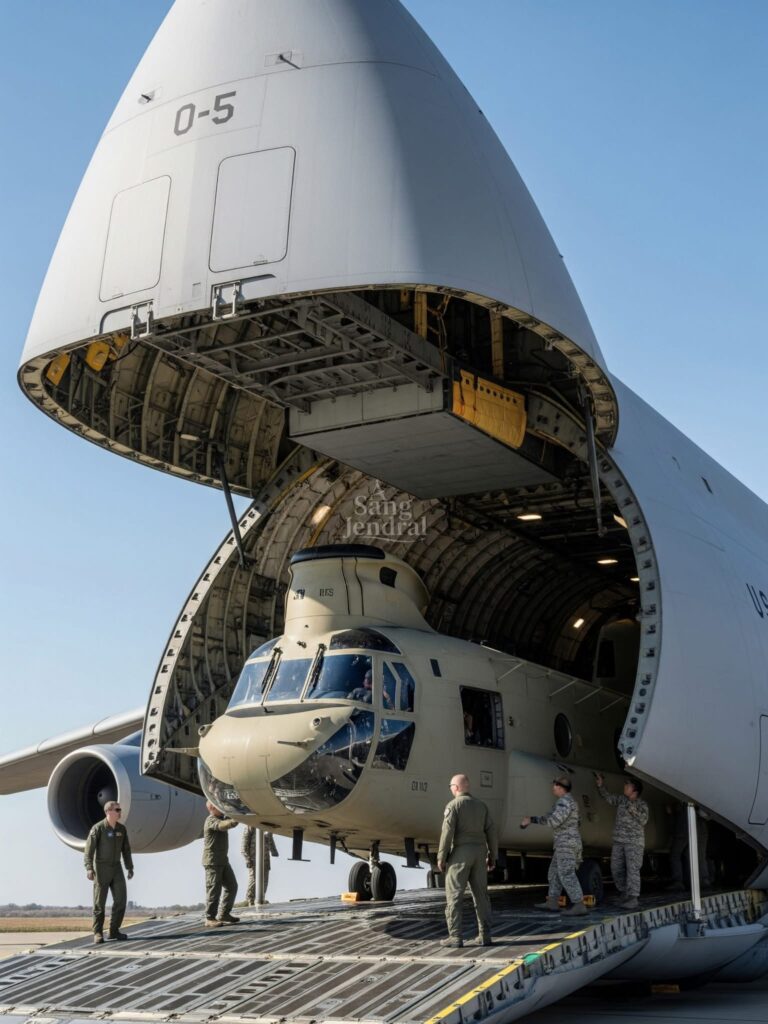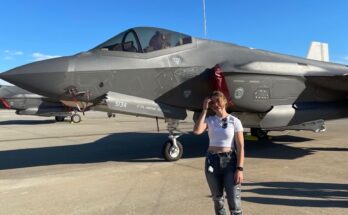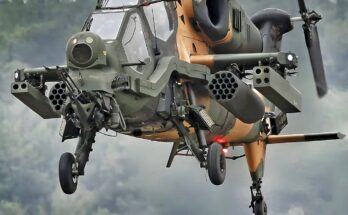
Few sights in military aviation are as jaw-dropping as watching a giant transport aircraft load an equally impressive helicopter into its cavernous interior. This is exactly what happens when a U.S. Air Force C-5 Galaxy opens its massive nose and tail doors to “swallow” a CH-47 Chinook for transport. For anyone who has never witnessed this process, it looks almost unreal, like a scene out of a science fiction movie. Yet it is a routine demonstration of modern military engineering at its finest.
The Lockheed C-5 Galaxy is one of the largest military transport aircraft in the world. Introduced in 1970, it was designed to move oversized cargo across long distances, giving the U.S. military a truly global reach. Its sheer size is staggering: the C-5 stretches about 247 feet in length, with a wingspan of 222 feet, and stands as tall as a six-story building. But what makes it so unique is not just its dimensions, but its ability to carry heavy and bulky equipment that few other aircraft could ever accommodate.
The Boeing CH-47 Chinook, by contrast, is one of the most recognizable helicopters in the world. Famous for its twin rotors and unmatched lifting ability, the Chinook plays a vital role in transporting troops, artillery, and supplies directly to the battlefield. But when the military needs to rapidly deploy this helicopter across oceans or continents, it turns to the C-5 Galaxy. Watching the Chinook being loaded inside demonstrates the kind of logistical coordination that keeps armed forces mobile and ready anywhere in the world.
The loading process begins with the C-5 kneeling. Thanks to its adjustable landing gear, the aircraft can lower its nose to make loading easier. With the front cargo door lifted and the ramp extended, the Chinook is carefully guided inside. Depending on the mission, the CH-47 may have its rotor blades removed and secured for transport, allowing it to fit snugly within the Galaxy’s hold. Once inside, crews secure the helicopter with chains and locking mechanisms to prevent any movement during flight. It is a precise, well-practiced procedure that highlights the professionalism of the Air Mobility Command teams.
What makes this feat so impressive is the scale. The CH-47 Chinook is not a small aircraft—it measures nearly 99 feet from rotor tip to rotor tip and can weigh up to 50,000 pounds when fully loaded. Yet the C-5 Galaxy’s cargo bay swallows it whole with room to spare. In fact, the C-5 is capable of carrying not just one but multiple helicopters, or even tanks, armored vehicles, and other massive equipment.
This ability to move heavy machinery rapidly across the globe is a critical advantage for the U.S. military. Whether responding to combat operations, humanitarian crises, or natural disasters, the Galaxy ensures that essential equipment arrives exactly where it is needed. Watching the C-5 load a Chinook is more than just a display of engineering—it is a reminder of how mobility and logistics are often as important as firepower in modern warfare.
From a distance, the sight of a helicopter disappearing into the belly of a transport plane looks almost surreal. But up close, it is a clear testament to decades of innovation, design, and planning that allow militaries to project power and provide aid anywhere on Earth. Truly, this is unbelievable military technology at work.


